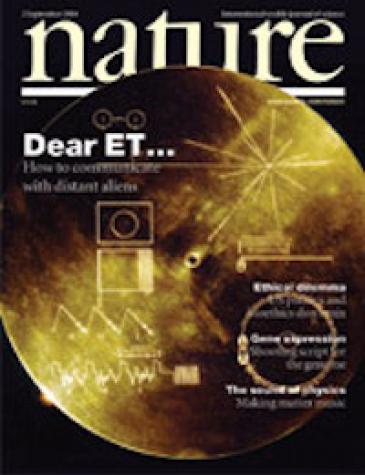Publications
Abstract
It is well known that electromagnetic radiation—radio waves—can in principle be used to communicate over interstellar distances...By contrast, sending physical artefacts [sic] has seemed extravagantly wasteful of energy, and imagining human travel between the stars even more so...The key consideration in earlier work, however, was the perceived need for haste. If extraterrestrial civilizations existed within a few tens of light years, radio could be used for two-way communication on timescales comparable to human lifetimes (or at least the longevities of human institutions). Here we show that if haste is unimportant, sending messages inscribed on some material can be strikingly more energy efficient than communicating by electromagnetic waves. Because messages require protection from cosmic radiation and small messages could be difficult to find among the material clutter near a recipient, ‘inscribed matter’ is most effective for long archival messages (as opposed to potentially short “we exist” announcements). The results suggest that our initial contact with extraterrestrial civilizations may be more likely to occur through physical artefacts [sic]—essentially messages in a bottle—than via electromagnetic communication.
About the Co-author
Christopher Rose, a self-proclaimed "semi-lifer at MIT," earned all of his degrees in electrical engineering from the Institute: SB (1979), SM (1981), and PhD (1985). After MIT, he began an almost "30-year-and-counting postdoc" in communication theory, starting at Bell Laboratories Research as a member of the Network Systems Research Department. He has served as an Associate Director of the Wireless Networks Laboratory (WINLAB) (1999-2007) and as Professor of Electrical & Computer Engineering at Rutgers University until 2015. Rose is currently a Professor of Engineering and Associate Dean of the Faculty for Special Initiatives at Brown University. A Fellow of the IEEE, he is cited "for contributions to wireless communication systems theory".
For fun, as an outgrowth of research on opportunistic communications, he also considered the details of a problem everyone has wondered about at one time or another: [H]ow will our first extraterrestrial civilization contact occur? The interesting twist is that it can be FAR more efficient for distant "little green people" to send information-bearing physical artifacts than electromagnetic signals -- seemingly at odds with current SETI wisdom.
Christopher Rose on the inspiration for his article in Nature
Rose, Christopher and Gregory Wright. "Inscribed matter as an energy-efficient means of communication with an extraterrestrial civilization." Nature 431, 47-49 (2 September 2004).
